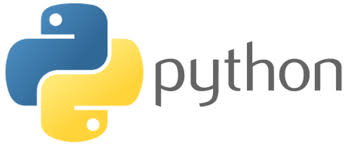CS 100

Scientific Computing
Activity 5 - Practice with functions
Download demo_functions.py and open it in Thonny. Save it to your cs100/ch1 folder. Run the program by clicking the green ‘play’ button. You should see the following as a result in the shell area:
Hello students
3566.5
Remember that if you want to use comments to silence out parts of Python instructions, use #. For example,
#print("This is commented out by the # symbol")
print("This is not commented out")
print("This also is not commented out") # but this part is a comment
Part 1: Answer the following questions.
Write your answer at the top of the file as a comment.
- Which function has parameters? What are the parameters?
- Which function returns a value?
Part 2: Investigate the ways you invoke/call a function that has a return and a function that does not have return.
Experiment calling hello() function in several ways.
- Write in comments, what is the output as a result of the function call:
hello() - Write in comments, what is the output as a result of the function call:
print(hello()) - Write in comments, what do you think happened? What is different? Where is
Nonecoming from?
Now, experiment calling avg() function in several ways.
- Write in comments, what is output to the shell as a result of:
avg(4,8) - Write in comments, what is output as a result of:
print( avg(4,8) ) - Write in comments, what is output as a result of:
rez = avg(4, 8) print(rez) - Write in comments, what do you think happened? What is different?
Part 3: Define and test (call) the following functions.
- Modify the existing
hello()function definition so that it appears as follows. Test the function to see that it works (i.e., run the program again)def hello(): print("Hello students") print("Oh hi") print("How are you?") print("I'm good thanks.") - Add code to compute the average of 50 and 75 and print the result.
- Define a function
prodthat takes two numbers as input and returns their product. - Add the following function definition.
def mystery(): print("A") print("B") return "123" print("C") print("D") - Call the function as follows. What is output to the shell? Explain in comments.
myResult = mystery() print(myResult)
Part 4: Optional - if you have time
- Write a function
weirdSumthat takes four numbers as input and returns the sum of the first two multiplied by the sum of the last two. - Write a function
secondsTodaywith no parameters that prints out the number of seconds in a day (note: there are 24 hours in a day; 60 minutes in an hour; and 60 seconds in a minute). When called, your function should produce the following output:IN A DAY THERE ARE: 86400 seconds. - Write a function that solves a generic quadratic equation of the form ax2 + bx + c = 0, where
a,b, andcare passed as parameters. Note: to compute square root of 7 you may use:import math result = math.sqrt(7)
How to submit
Make sure you saved your work and that it runs without errors. Submit your demo-functions.py file to Activity 5 on Moodle.